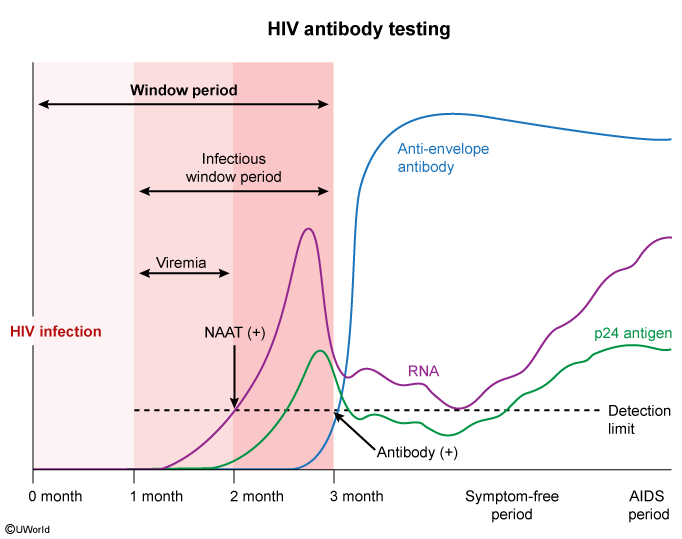Acute HIV Infection
Article Sections
Introduction
Acute HIV infection represents the earliest stage following the acquisition of human immunodeficiency virus (HIV), a retrovirus targeting CD4+ T lymphocytes with resulting immune system impairment. This stage typically occurs 2-4 weeks post exposure and is marked by rapid viral replication, high levels of viremia, and a significant reduction in CD4+ T-cell counts. It is often accompanied by nonspecific symptoms that mimic other viral illnesses, making diagnosis challenging. For these reasons, acute HIV infection is a pivotal period for viral dissemination and heightened transmission risk.
Epidemiology and transmission
HIV infection remains a global public health challenge, with >40 million people living with HIV worldwide. HIV-1 is responsible for most of the infections worldwide (and nearly all cases in the United States), although HIV-2 infection can sometimes occur (namely in West Africa). Despite advancements in treatment and prevention, certain populations remain disproportionately affected. Key risk groups include men who have sex with men, individuals with multiple sexual partners, inconsistent condom use, IV drug users, and those living in high-prevalence regions (eg, sub-Saharan Africa). Transmission occurs primarily through the exchange of body fluids, with the most common routes of transmission including sexual, parenteral, and vertical (mother-to-child) transmission.
Continue Learning with UWorld
Get the full Acute HIV Infection article plus rich visuals, real-world cases, and in-depth insights from medical experts, all available through the UWorld Medical Library.
Figures
